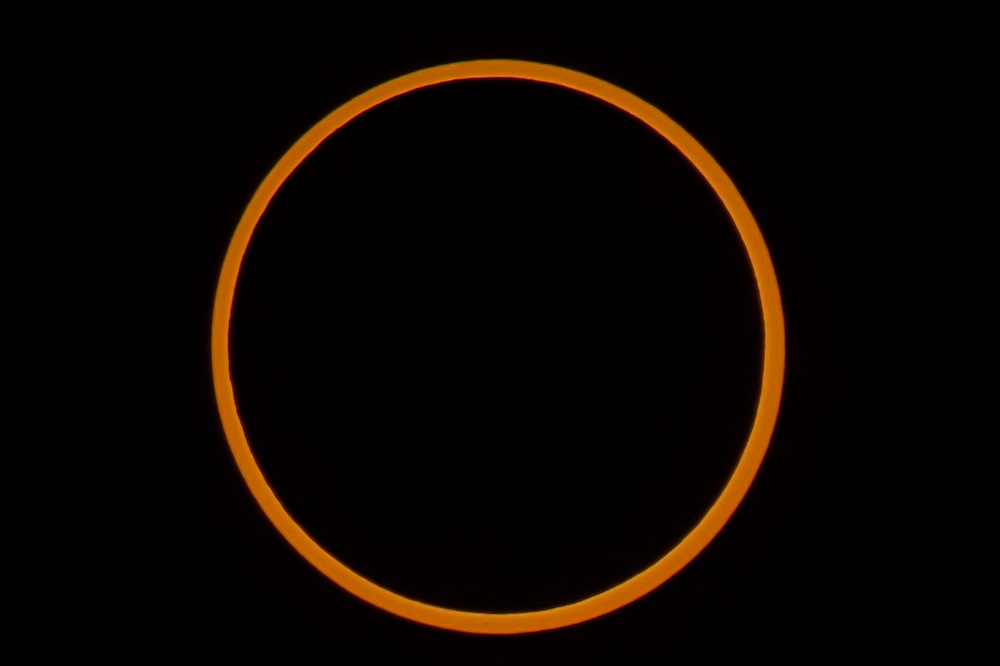Eerie Eclipse Photo: Blacked-Out Sun Caught Over Desert Lake

A California photographer captured this perfect "Ring of Fire" image of the May 20 solar eclipse from the Nevada desert.
The eclipse was visible Sunday in the western United States, but only skywatchers on the sun's central path got a view of the solar annulus, or the symmetrical ring of sun peeking out around the body of the moon. San Francisco currency trader and amateur photographer Phil McGrew was one of the lucky few.
"Myself and a few friends have been obsessing over this eclipse since January," McGrew told LiveScience.
McGrew and his friends weren't interested in settling for the "crescent sun" look that the eclipse would take on in San Francisco. To reach the eclipse's central path, they travelled five hours east to Pyramid Lake in Nevada. There, they figured, they'd have the best chance for good weather.
The sky didn't disappoint. [Gallery: Solar Eclipse Photos]
"There were a few low clouds but they offered very little interference," McGrew said. "The hardest part was simply keeping the sun nearly centered in the camera."
Other areas didn't have so much luck with eclipse weather. In Boulder, Colo., where astronomers organized a massive eclipse-viewing party, clouds obscured the sun during much of the event — though the sun broke through just before the eclipse reached its maximum, with 86 percent of the sun's face covered.
Sign up for the Live Science daily newsletter now
Get the world’s most fascinating discoveries delivered straight to your inbox.
In Hong Kong, stormy weather ruined the view, LiveScience's sister site SPACE.com reported. San Francisco, however, had crisp, clear skies.
Sunday's event was an annular solar eclipse, in which the moon passes between the sun and Earth. Because the moon's orbit is elliptical and the moon is currently far out on this orbit, the moon looks smaller than usual and can't block the sun's face entirely. For viewers along the central path of the most recent eclipse, a maximum of 94 percent of the sun's face was covered. Everyone outside this path saw varying magnitudes of partial eclipse.
Sunday's eclipse was the best chance to see this astronomy phenomenon in 2012; the next solar eclipse will occur on Nov. 13, 2012, but will only be visible over the Pacific Ocean, with only a few minutes of sunrise eclipse visible to some residents in northern Australia.
U.S. residents can look forward to Aug. 21, 2017, the next time a total solar eclipse will be visible from North America. That eclipse will travel an approximately 125-mile (200 km) -wide path from northern Oregon through Wyoming, Tennessee and South Carolina.
You can follow Live Science senior writer Stephanie Pappas on Twitter @sipappas. Follow LiveScience for the latest in science news and discoveries on Twitter @livescience and on Facebook.

Stephanie Pappas is a contributing writer for Live Science, covering topics ranging from geoscience to archaeology to the human brain and behavior. She was previously a senior writer for Live Science but is now a freelancer based in Denver, Colorado, and regularly contributes to Scientific American and The Monitor, the monthly magazine of the American Psychological Association. Stephanie received a bachelor's degree in psychology from the University of South Carolina and a graduate certificate in science communication from the University of California, Santa Cruz.









